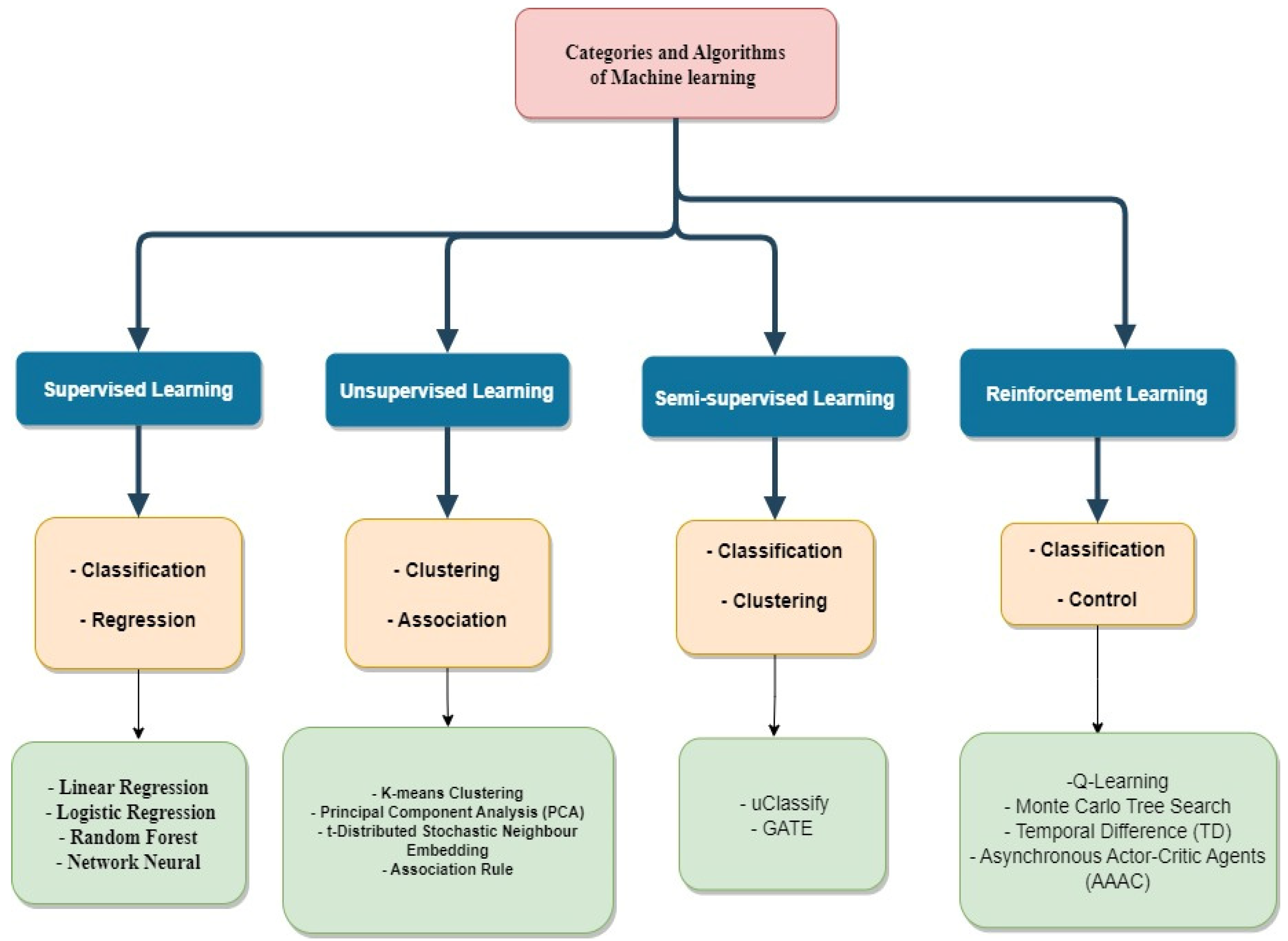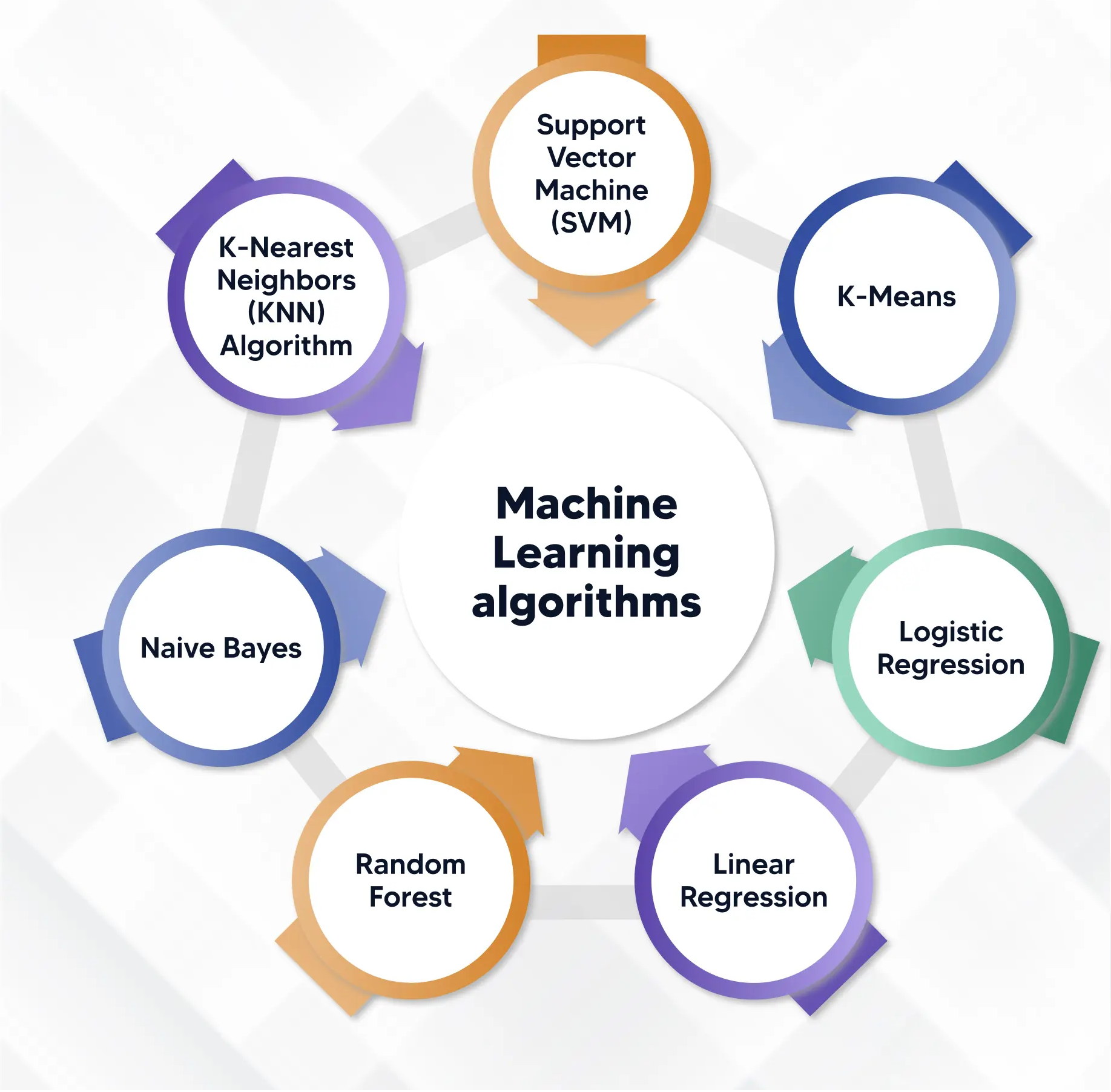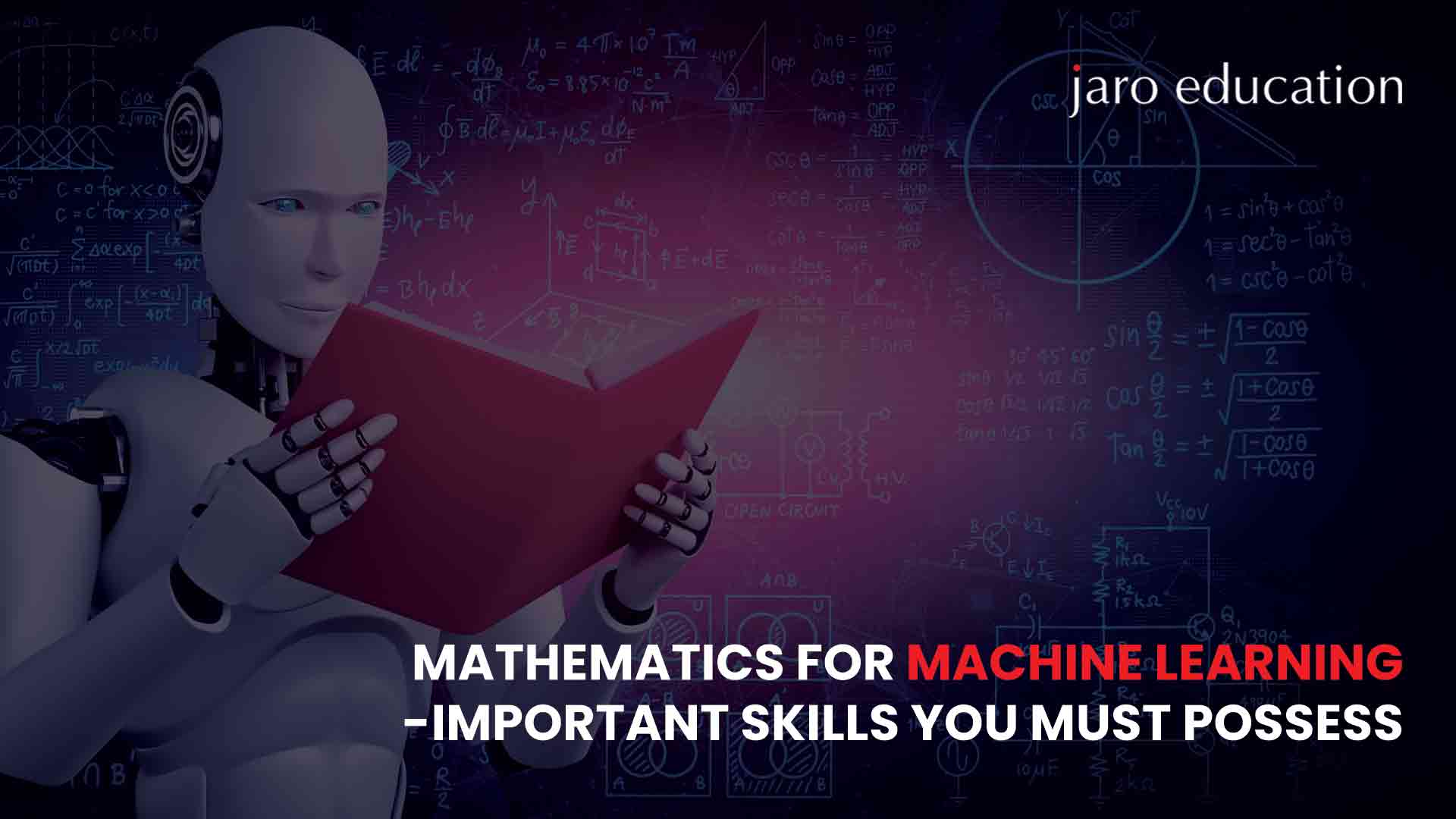Top 40+ Machine Learning Interview Questions & Answers
Table of Contents

Machine learning powers everything from Netflix recommendations to self-driving cars. With this surge in adoption, the demand for skilled ML professionals has skyrocketed. Whether you’re a fresher preparing for your first interview or a working professional switching careers, strong fundamentals are key.
That’s where machine learning interview questions and answers play a vital role, not just to test your knowledge, but to deepen your understanding of how ML works. In this blog, we’ve compiled the top 50 interview questions on machine learning, ranging from basics to advanced, along with clear, real-world answers. Whether you’re revising or upskilling, these machine learning interview questions can help you land your next big opportunity.
Basic Machine Learning Interview Questions
Here are some basic machine learning interview questions for freshers:
1. What is Machine Learning?
Machine Learning is a subset of Artificial Intelligence that enables systems to learn from data and improve their performance over time without being explicitly programmed. It involves training algorithms using historical data so they can make predictions or decisions. For example, ML can predict house prices, detect fraud, or recommend products on e-commerce sites.
2. What are the different types of Machine Learning?
There are three types of machine learning:
Supervised Learning
Supervised machine learning is a type of algorithm training that uses labeled data—datasets where the correct outputs or answers are already known. The model learns by identifying patterns in this data, enabling it to make accurate predictions or decisions when presented with new, unseen inputs.
Unsupervised Learning
Unsupervised learning deals with data that doesn’t have any predefined labels or outcomes. The model analyzes this raw input to uncover hidden patterns, groupings, or irregularities within the data on its own.
Reinforcement Learning
Reinforcement learning trains a model (agent) through trial and error. The agent gets rewards for actions that help achieve a goal and penalties for wrong moves, learning over time to make better decisions.
3. What is the difference between AI, Machine Learning, and Deep Learning?
- Artificial Intelligence (AI): The broader concept of machines simulating human intelligence.
- Machine Learning (ML): A subset of AI where systems learn from data.
- Deep Learning (DL): A subset of ML that uses neural networks with multiple layers. For example, while AI might power a chatbot, ML refines its responses, and DL can recognize voices or faces with high accuracy.
4. What is a dataset in Machine Learning?
A dataset in machine learning is a structured collection of data used to train and test models. It contains features (independent variables) and labels (target variables in supervised learning).
A dataset is usually split into training, validation, and test sets to ensure that the model performs well on unseen data.
5. What is Overfitting in Machine Learning and How Can You Avoid It?
Overfitting is when a model learns the training data too well, including noise and details, leading to poor performance on new data. It fails to generalize.
To avoid it:
- Use cross-validation
- Apply regularization (L1/L2)
- Choose a simpler model
- Use early stopping in training
- Add more data
- Apply dropout (in neural networks)
- The goal is to build a model that performs well not just on training data, but on unseen data too.
6. What is Underfitting in Machine Learning?
Underfitting happens when a model is too simple to capture the underlying pattern in the data. It results in poor performance on both training and test datasets. Causes include insufficient training, a low-complexity model, or ignoring relevant features. Increasing model complexity or training time can help resolve it.
7. What is the difference between classification and regression?
- Classification is used when the output variable is a category or class label (e.g., spam or not spam).
- Regression is used when the output is a continuous value (e.g., predicting stock prices).
Both are types of supervised learning but differ in the nature of the target variable.
8. What is a feature in Machine Learning?
A feature is an individual measurable property or characteristic used as input for a machine learning model. For example, in a house price prediction model, features might include the number of bedrooms, location, or area. Good features help the model make accurate predictions.
9. What is a label in Machine Learning?
A label is the output or target variable in supervised learning. It is what the model is trying to predict. For example, in a model that predicts loan approval, the label would be “approved” or “rejected.” Labels are crucial for training supervised models.
10. What is the role of training and testing datasets?
The training dataset is used to teach the model by feeding it input-output pairs. The testing dataset evaluates the model’s performance on unseen data. Splitting data into training and testing ensures that the model generalizes well and isn’t just memorizing patterns.
Supervised vs Unsupervised Learning

*mdpi.com
11. What is Supervised Learning?
Supervised Learning is a type of machine learning where the algorithm is trained on a labeled dataset, meaning each input has a corresponding correct output. The goal is to learn a mapping from inputs to outputs. Common applications include spam detection, credit scoring, and image classification.
12. What is Unsupervised Learning?
Unsupervised Learning is used when the data has no labeled outputs. The algorithm explores the structure and patterns within the data without predefined outcomes. It’s commonly used for clustering, anomaly detection, and dimensionality reduction. An example is segmenting customers based on purchase behavior.
13. What are the key differences between Supervised and Unsupervised Learning?
- Data: Supervised uses labeled data; Unsupervised uses unlabeled data.
- Output: Supervised predicts outcomes; Unsupervised finds hidden patterns.
- Examples: Supervised: Regression, Classification. Unsupervised: Clustering, Association.
- Goal: Supervised aims for accuracy; Unsupervised aims for insight and pattern discovery.
14. What are some popular algorithms used in Supervised Learning?
Popular Supervised Learning algorithms include:
- Linear Regression for predicting continuous values
- Logistic Regression for binary classification
- Decision Trees and
- Random Forest for both classification and regression
- Support Vector Machines (SVM)
- K-Nearest Neighbors (KNN)
These are widely used in practical applications from marketing to finance.
15. What are some common Unsupervised Learning algorithms?
Common Unsupervised Learning algorithms include:
- K-Means Clustering: Divides data into ‘K’ groups based on similarity
- Hierarchical Clustering: Creates nested clusters based on distance
- Principal Component Analysis (PCA): Reduces dimensionality
- DBSCAN: Clusters based on density
These techniques help find structure in complex data without labels.
Model Evaluation & Metrics
16. What is a Confusion Matrix?
A Confusion Matrix is a table used to evaluate the performance of a classification model. It shows the number of true positives (TP), true negatives (TN), false positives (FP), and false negatives (FN). From this matrix, we can calculate important metrics like accuracy, precision, recall, and F1 score.
17. Define Precision and Recall?
Precision: Precision measures how many of the predicted positive results are actually correct. It is the ratio of true positives to the total number of predicted positives (including both correct and incorrect ones).
Formula: Precision = True Positives / (True Positives + False Positives)
Recall: Recall measures how well a model can identify all relevant instances. It is the ratio of correctly predicted positive cases to all actual positive cases.
Formula: Recall = True Positives / (True Positives + False Negatives)
Recall measures how many actual positives were correctly identified (TP / TP+FN).
Precision is useful when false positives are costly, while recall is vital when false negatives are riskier, like in disease detection.
18. What is F1 Score and why is it important?
The F1 Score is the harmonic mean of precision and recall, calculated as:
2 * (Precision * Recall) / (Precision + Recall)
It provides a balanced evaluation when there’s an uneven class distribution or when both precision and recall are equally important. It’s especially useful in binary classification tasks.
19. What is Cross-Validation?
Cross-Validation is a technique used to assess how a model performs on unseen data. The dataset is split into multiple parts (folds), and the model is trained and validated on different combinations of these folds. The most common method is k-fold cross-validation, which helps in reducing overfitting and ensuring robustness.
20. What is ROC Curve and AUC?
The ROC (Receiver Operating Characteristic) curve is a graphical plot that illustrates the performance of a binary classifier at various threshold settings. The AUC (Area Under the Curve) quantifies the overall ability of the model to discriminate between classes. A higher AUC indicates better model performance.
Algorithms & Their Applications

*cloudfront.net
21. What is Linear Regression?
Linear Regression is a supervised learning algorithm used to model the relationship between a dependent variable and one or more independent variables. It assumes a linear relationship and predicts continuous values. For example, it can be used to forecast house prices based on area and location.
22. What is Logistic Regression?
Logistic Regression is used for binary classification problems. Unlike linear regression, its output is bounded between 0 and 1 using a sigmoid function, making it ideal for predicting categories such as “yes” or “no,” “spam” or “not spam.” It’s simple yet powerful in many classification use cases.
23. What is Decision Tree algorithm?
A Decision Tree is a supervised learning algorithm that splits the dataset into branches based on feature values to reach a prediction. It mimics human decision-making and works for both classification and regression. It’s easy to understand and visualize but prone to overfitting if not pruned.
24. What is Random Forest?
Random Forest is an ensemble learning method that builds multiple decision trees and merges their results to improve prediction accuracy. It reduces overfitting and works well on both classification and regression problems. It’s widely used in financial analysis, fraud detection, and customer segmentation.
25. What is the K-Nearest Neighbors (KNN) algorithm?
KNN is a lazy, instance-based learning algorithm that classifies new data points based on the majority label of the ‘K’ closest data points. It’s simple and effective but can be slow with large datasets. It’s used in recommendation systems, handwriting detection, and more.
26. What is Support Vector Machine (SVM)?
SVM is a supervised learning algorithm that finds the optimal hyperplane to separate classes in the feature space. It works well in high-dimensional data and is effective for text classification, face detection, and bioinformatics. With kernel tricks, it can also handle non-linear classification.
27. What is Naive Bayes algorithm?
Naive Bayes is a probabilistic classifier based on Bayes’ theorem with an assumption of feature independence. Despite its simplicity, it performs well in text classification tasks like spam filtering and sentiment analysis. It’s fast, efficient, and works well with large datasets.
28. What is Gradient Boosting?
Gradient Boosting is an ensemble technique that builds models sequentially, where each new model attempts to correct the errors made by the previous one. It is highly accurate and widely used in competitions like Kaggle. Frameworks like XGBoost and LightGBM are built on this principle.
29. What is XGBoost?
XGBoost (Extreme Gradient Boosting) is an optimized implementation of gradient boosting that is faster and more efficient. It includes regularization, parallel processing, and tree pruning, making it ideal for structured/tabular data. It’s a go-to algorithm in most ML competitions due to its performance.
30. What is Clustering and how is it used?
Clustering is an unsupervised learning technique that groups similar data points together. It’s useful in market segmentation, social network analysis, and customer behavior analysis. Algorithms like K-Means and DBSCAN are commonly used to identify patterns or structures in unlabeled data.
Deep Learning & Neural Networks
31. What is Deep Learning?
Deep learning, a branch of machine learning, uses artificial neural networks to mimic human thinking and learning. The “deep” in deep learning refers to the multiple layers in these networks. A key difference is that in traditional machine learning, feature engineering is manually handled, whereas deep learning models automatically determine which features to focus on.
This question is commonly asked in both machine learning and deep learning interviews.
32. What is an Artificial Neural Network (ANN)?
An Artificial Neural Network is a computational model inspired by the human brain. It consists of input layers, hidden layers, and output layers, with neurons connected by weights. ANNs are the foundation of deep learning and are used for tasks like classification, regression, and pattern recognition.
33. What is the difference between CNN and RNN?
CNN (Convolutional Neural Network): Best for spatial data like images. It uses filters to detect features such as edges, textures, and shapes.
RNN (Recurrent Neural Network): Ideal for sequential data like time series or text. It has memory of past inputs via feedback loops.
Both are deep learning architectures but serve different use cases.
34. What is Gradient Descent?
Gradient Descent is an optimization algorithm used to minimize the loss function in machine learning models. It updates the model’s parameters (weights) by moving in the direction of the steepest descent of the loss function. Variants include Stochastic Gradient Descent (SGD) and Mini-Batch Gradient Descent.
35. What is Backpropagation?
Backpropagation is the algorithm used to train neural networks by adjusting weights based on the error rate from the output layer backward through the network. It uses the chain rule to compute gradients and helps in minimizing the loss function. It’s essential for learning in deep neural networks.
Feature Engineering & Data Handling
36. What is Feature Engineering?
Feature Engineering is the process of selecting, modifying, or creating new features from raw data to improve a model’s performance. It includes tasks like encoding, binning, interaction terms, and transformations. Good feature engineering can significantly boost model accuracy, especially in tabular datasets.
37. How do you handle missing values in a dataset?
Missing values can be handled in several ways:
Deletion: Remove rows or columns with too many missing values
Imputation: Fill missing values using mean, median, mode, or model-based predictions
Flagging: Mark missing values with a new feature
The choice depends on the nature of the data and the problem being solved.
38. What is One-Hot Encoding?
One-Hot Encoding is a method used to convert categorical variables into a numerical format. It creates a binary column for each category. For example, the category “Color” with values Red, Green, and Blue becomes three separate columns with 1s and 0s. It’s commonly used in ML models that can’t handle text inputs.
39. What is Feature Scaling, and why is it important?
Feature Scaling transforms features to a similar scale to prevent some variables from dominating the learning algorithm. Common techniques include:
- Min-Max Scaling (Normalization)
- Standardization (Z-score normalization)
- It’s especially important for distance-based algorithms like KNN and gradient-based methods like logistic regression.
40. What is Dimensionality Reduction?
Dimensionality Reduction involves reducing the number of input features while retaining essential information. Techniques like Principal Component Analysis (PCA) and t-SNE help in improving model efficiency, reducing overfitting, and visualizing high-dimensional data. It’s often a key step when dealing with large feature sets.
Python/Tool-Based Questions
41. What are the most commonly used Python libraries for Machine Learning?
Some of the most commonly used Python libraries for machine learning include:
Scikit-learn: For basic ML models and preprocessing
Pandas: For data manipulation and analysis
NumPy: For numerical operations
Matplotlib/Seaborn: For data visualization
TensorFlow/Keras & PyTorch: For deep learning
Each of these libraries has a specific role and simplifies complex tasks in the ML workflow.
42. What is Scikit-learn used for?
Scikit-learn is a powerful Python library for traditional machine learning. It includes tools for classification, regression, clustering, dimensionality reduction, model selection, and preprocessing. It is user-friendly, well-documented, and often the first choice for beginners and professionals alike in structured data projects.
43. How does Pandas help in data preprocessing?
Pandas provides powerful data structures like DataFrame and Series to handle and preprocess data. It allows for easy data cleaning, filtering, transformation, handling missing values, encoding, merging datasets, and generating summary statistics. It’s essential for preparing data before feeding it into ML models.
44. What is the role of TensorFlow and Keras in machine learning?
TensorFlow is an open-source ML framework developed by Google, and Keras is a high-level API that runs on top of TensorFlow. They are used to build, train, and deploy deep learning models. Keras simplifies the process of designing neural networks with easy-to-use syntax and abstraction.
45. What is the difference between TensorFlow and PyTorch?
TensorFlow: More mature, supports deployment on mobile and web, and is backed by Google.
PyTorch: More intuitive and Pythonic, with dynamic computation graphs that make debugging easier.
Both are widely used for deep learning, and the choice often depends on the project requirements or personal preference.
46. You built a model with 95% accuracy, but your client is not happy. Why might that be?
High accuracy doesn’t always mean a good model. If the data is imbalanced, for example, in fraud detection where 95% of transactions are genuine, the model could just predict everything as “not fraud” and still achieve 95% accuracy. But it fails to catch actual frauds. In such cases, precision, recall, and F1 score are more important than plain accuracy.
Scenario-Based & Advanced Questions
47. How would you handle imbalanced datasets?
To handle imbalanced datasets, you can:
Resample the data: Undersample the majority class or oversample the minority class
Use SMOTE (Synthetic Minority Over-sampling Technique)
Choose appropriate metrics: Use precision, recall, or F1 score instead of accuracy
Try different algorithms that work well with imbalance, like tree-based models with class weights.
48. How do you choose the right algorithm for your machine learning project?
Choosing the right algorithm depends on:
- Data size and type (structured, unstructured)
- Problem type (classification, regression, clustering)
- Training time and interpretability requirements
- Accuracy needs and overfitting risks
- Typically, you try multiple models using cross-validation and pick the one with the best balance between performance and interpretability.
49. How do you deploy a machine learning model into production?
Deploying an ML model involves:
- Saving the model using joblib or pickle
- Creating an API using Flask, FastAPI, or Django
- Containerizing using Docker
- Deploying on cloud platforms like AWS, Azure, or GCP
- Monitoring the model for drift or performance issues
It’s important to ensure version control, scalability, and security throughout the process.
50. How do you detect and prevent data leakage?
Data leakage occurs when information from outside the training dataset is used to create the model, leading to overly optimistic results. It can be avoided by:
Carefully splitting data into training and testing sets
Not using future data to predict past events
Ensuring feature selection and scaling happen after the train-test split
Leakage can ruin a model’s real-world performance, so awareness is key.
Conclusion
Cracking a machine learning interview is about clarity, not cramming. This blog covers 50 interview questions on machine learning, from basics to real-world applications, to help you prepare with confidence. Whether you’re a fresher or experienced, use this guide to sharpen your thinking and stand out.
Keep learning with Jaro Education as machine learning evolves fast, so should you. Bookmark, share, and explore our other guides on data science and model deployment. One great answer could open your next big opportunity!
Frequently Asked Questions
What is the difference between supervised and unsupervised learning?
Supervised learning uses labeled data to train models, while unsupervised learning works with unlabeled data to find hidden patterns or structures.
What is overfitting and how can you prevent it?
Overfitting happens when a model learns noise instead of the actual pattern. It can be prevented using techniques like cross-validation, regularization, pruning, and dropout.
Explain bias-variance tradeoff.
Bias is the error due to wrong assumptions; variance is the error due to model sensitivity to small changes in data. The tradeoff is about balancing both to minimize total error.
What are some popular evaluation metrics for classification models?
Accuracy, Precision, Recall, F1-Score, ROC-AUC, and Confusion Matrix are commonly used.
What is the difference between bagging and boosting?
Bagging reduces variance by training models independently and averaging results (e.g., Random Forest), while boosting reduces bias by training models sequentially to correct errors (e.g., AdaBoost, XGBoost).


















